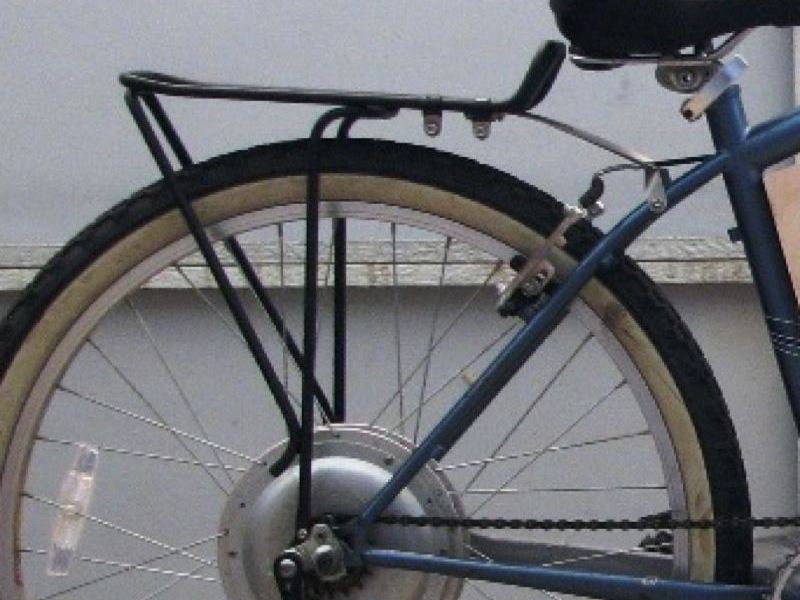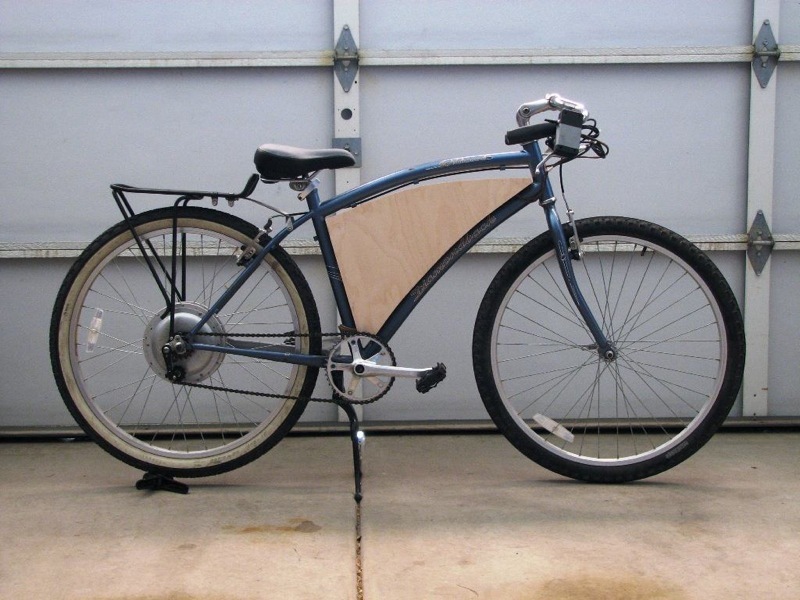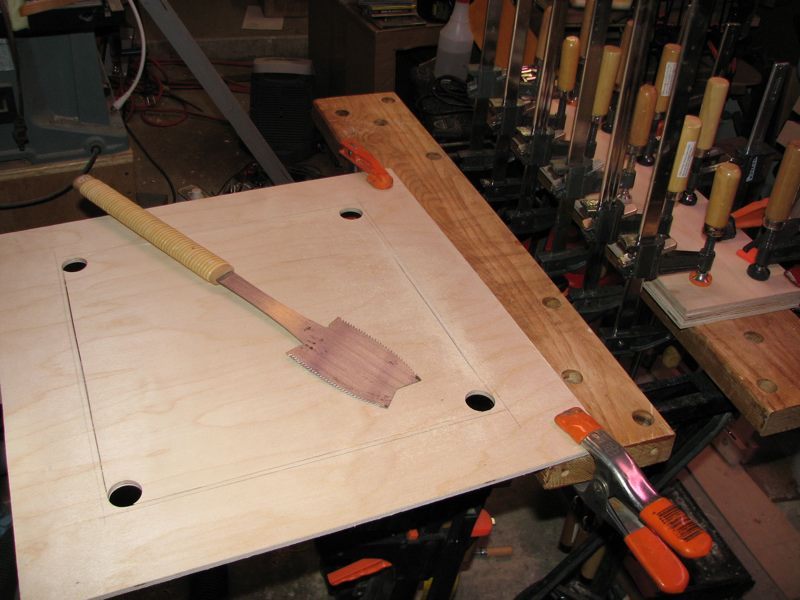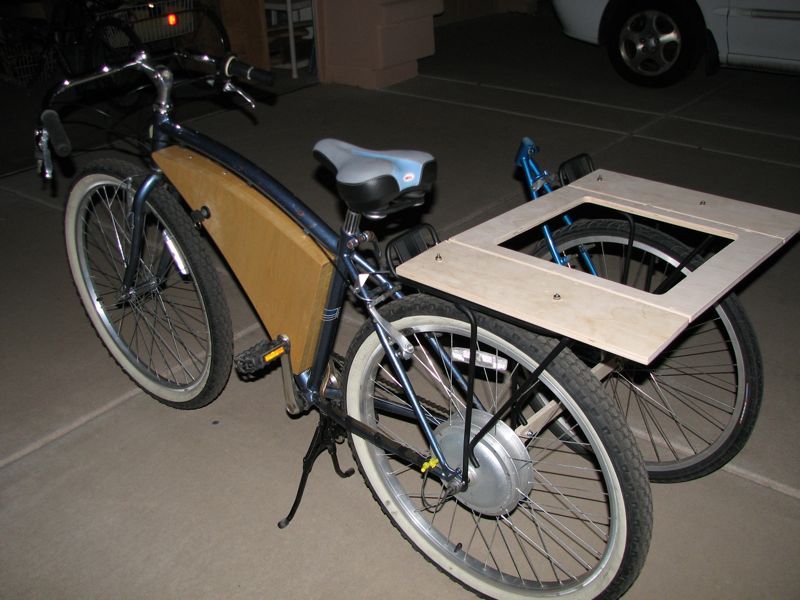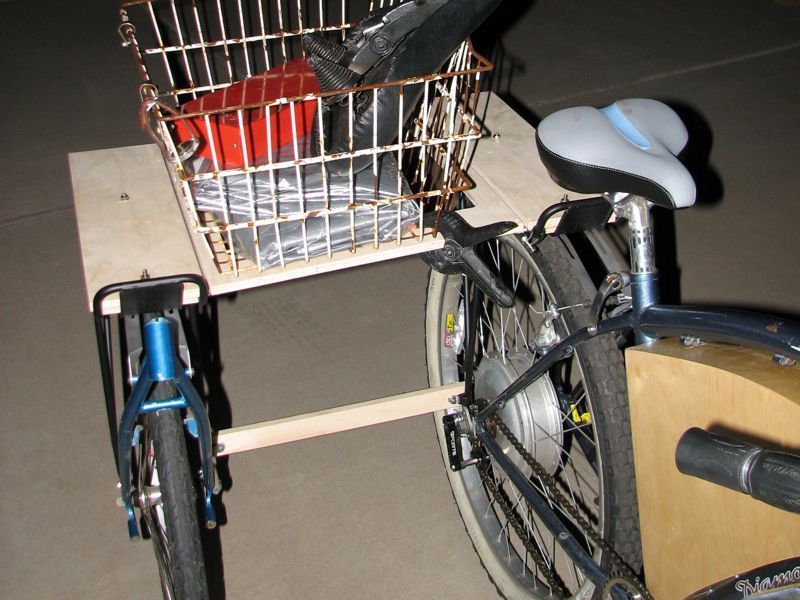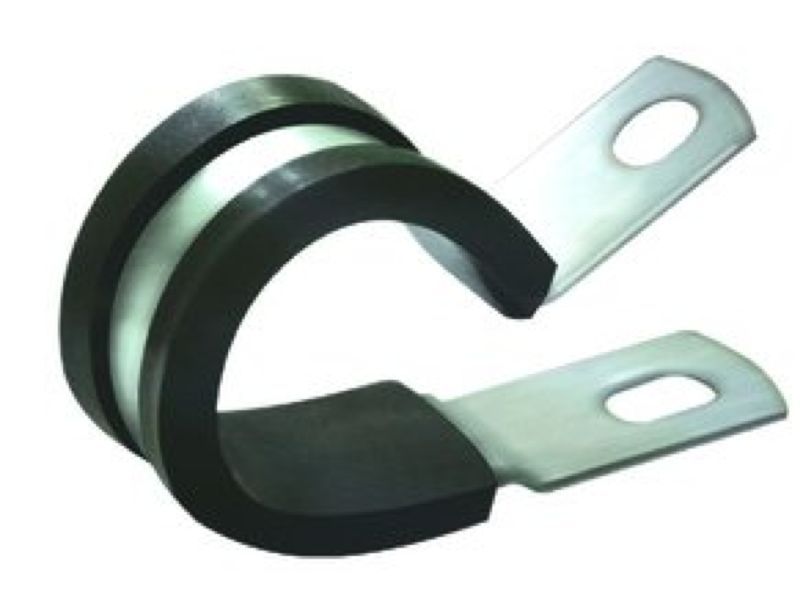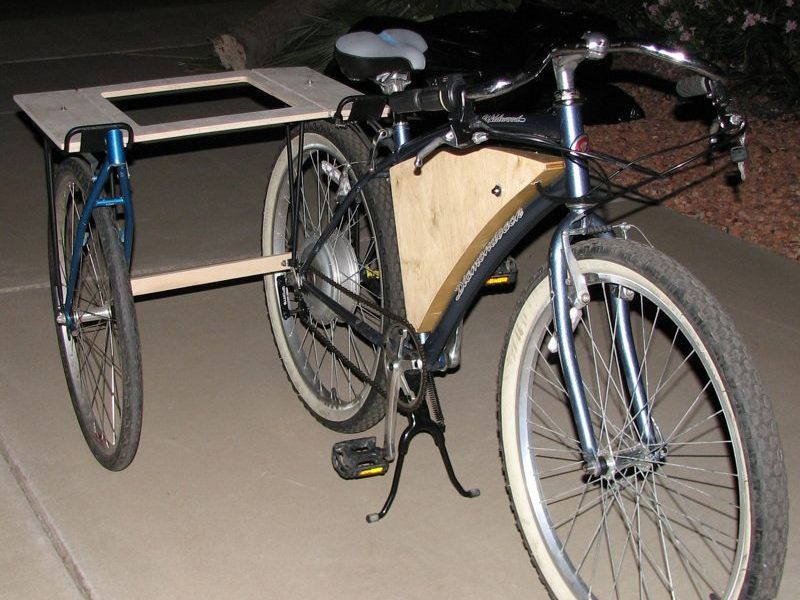In this case, it’s attached to my electric bike, but it will also work for a normal bicycle as well.
You will need:
- 1 bicycle
- 1 rear triangle of a bicycle with the same wheel size as your bike. I used a hacksaw to cut out this triangle from a bike I found in the dump truck.
- 2 similar cargo racks bolted to both bike and triangle.
- about 6-7 square feet of 1/2″ Baltic Birch plywood.


